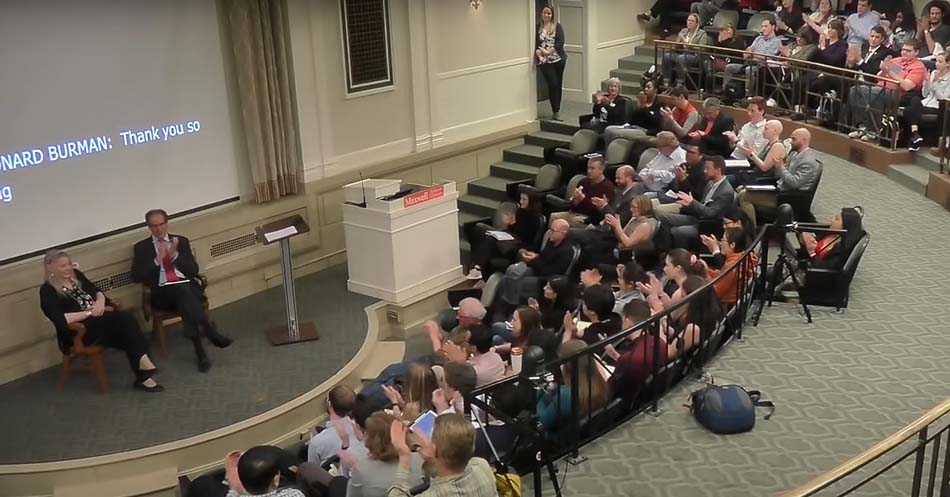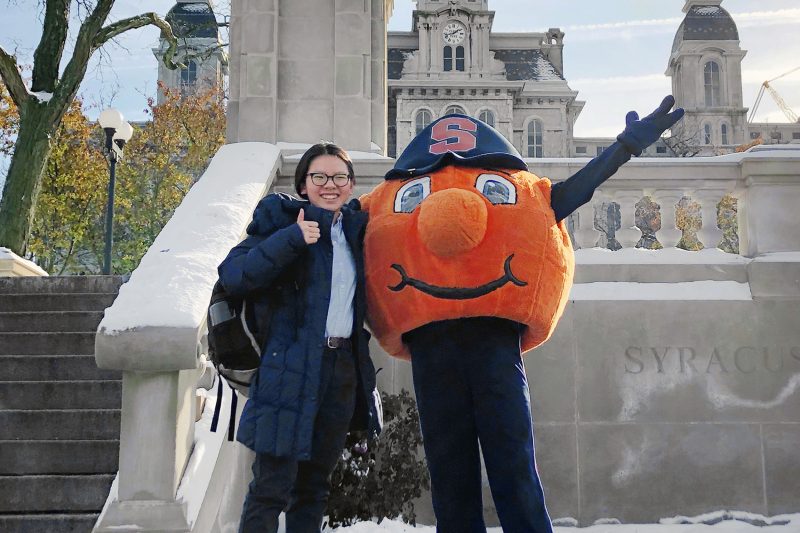
Prospective Student Visits
Prospective undergraduate first-year and transfer students who have not yet applied to Syracuse University have a range of options for in-person and virtual visits, sample classes, admission interviews and more.
In addition to virtual events, prospective graduate students should contact the admission team for your program to schedule an in-person visit or to attend a class.
Can’t get to campus?
Our virtual tour is the next best thing. Immerse yourself in a 360-degree view of campus as you take a tour led by Syracuse University alumni. Or, register to attend a virtual admission event.

Connect with an Alumni Ambassador
Learn about the Maxwell School from the people who know it best! Alumni Ambassadors are passionate champions of the Maxwell School who are using their Maxwell education to make real and lasting change in the world. Alumni from every degree program working in a range of organizations and industries are available to answer your questions. Connect with one today.
Public Events at Maxwell
Attend a public event, in person or virtually, and get a taste of what Maxwell School has to offer. With hundreds events each year—including prominent public speakers, lectures, workshops, foreign language conversation tables, research presentations and more—there are so many ways to engage in the intellectual and social life on campus.
CPR Seminar Series: Trevon Logan
Virtual
Add to: Outlook, ICal, Google Calendar
Trevon Logan (Ohio State University) will present “Competition and Discrimination in Public Accommodations: Evidence from the Green Books” as part of the CPR Seminar Series.
Abstract: This paper seeks to determine the role of market factors in the provision of non-discriminatory services before federal legislation forbade racial discrimination in public accommodations. We present a model of firm discrimination where a fraction of White consumers has discriminatory preferences related to shopping alongside Black consumers. The model captures the equilibrium relationship between the ratio of Black to White consumers and the ratio of non-discriminatory to discriminatory firms in a local market. A key insight of the model is that the market will not compete away discrimination when it arises on the part of consumers. Therefore, discrimination can persist in equilibrium, in contrast to traditional models of taste-based discrimination. We examine this hypothesis empirically using a new county-level dataset constructed from the Negro Motorist Green Books and the retail section of the Census of Business on the number of non-discriminatory and discriminatory public accommodations in the United States between 1939 to 1955. Using plausibly exogenous variation from multiple sources, we show that changes in the racial composition of consumers led to increases in the ratio of discriminatory to non-discriminatory firms in the post-war era. These results are robust to a host of alternative explanations. While our results suggest that market conditions played a role in reducing segregation, our empirical estimates are small, which confirms Cook et al. (2022)’s conjecture that the Civil Rights Act of 1964 was a necessary step toward ending racial discrimination in public accommodations.
For more information, please contact Alyssa Kirk.
Region
Virtual
Open to
Faculty
Students, Graduate and Professional
Organizer
MAX-Center for Policy Research
Accessibility
Contact Alyssa Kirk to request accommodations